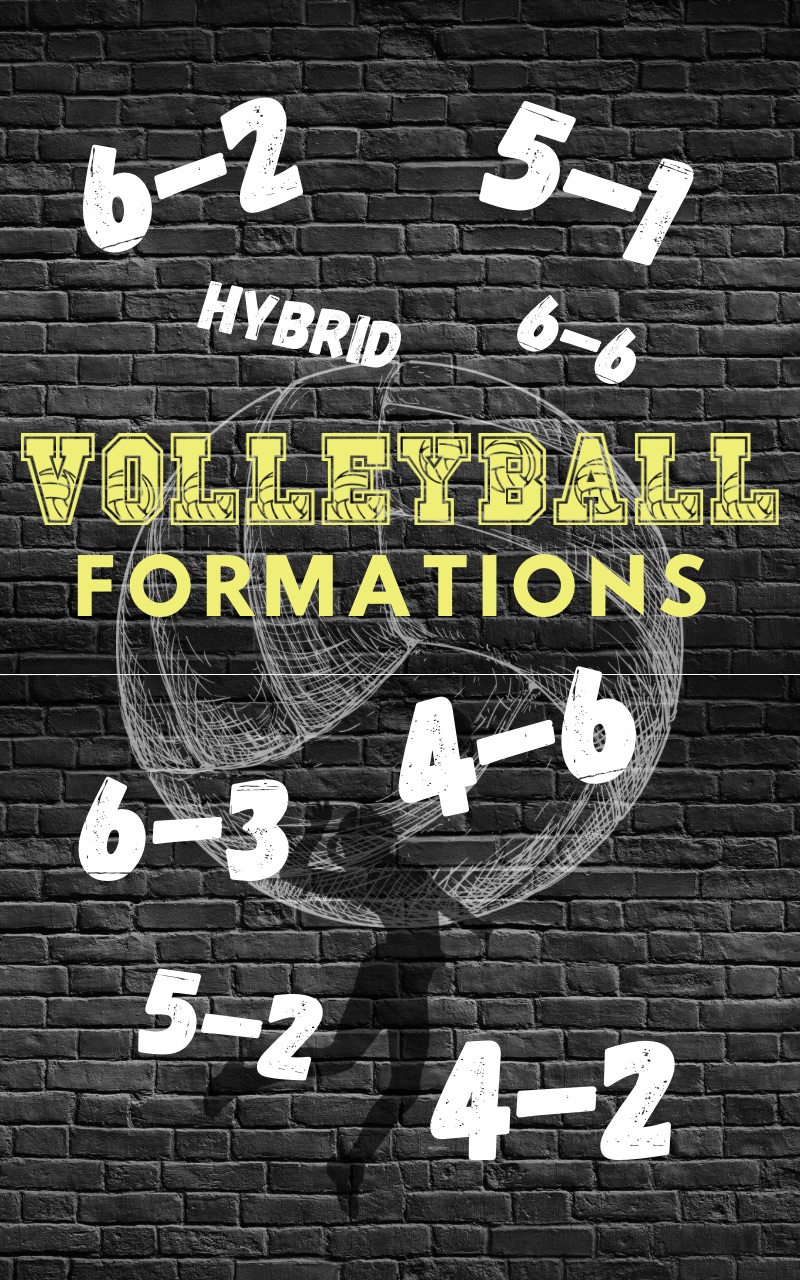
|
Different Volleyball Offenses
| |
|
[BACK]
6-2 In volleyball, the 6-2 offense is a versatile and dynamic system that allows teams to maximize their attacking options. This formation involves two setters who rotate in and out of the back row, and three attackers in the front row at all times. This flexibility not only keeps the opposing defense on their toes but also offers a broad array of attacking strategies, making the 6-2 offense a popular choice for teams aiming to maintain consistent offensive pressure throughout a match. rotation 1 example: 
For more information and diagrams for each position on each rotation in a "6-2" volleyball offense Click here for our ebook about "Volleyball Rotations" Here' a list of advantages of the volleyball 6-2 offense: 1. **Versatility:** The 6-2 offense is highly versatile, allowing teams to maintain offensive pressure throughout a match with three hitters always in the front row. 2. **Constant Threat:** With three hitters at all times, the team can execute quick attacks and spread the offense from pin to pin, making it challenging for the opposing block and defense to react. 3. **Varied Attack Options:** Having two setters opens up a wide range of attacking options, enabling a mix of plays, including back-row attacks, quick sets, and combination plays. 4. **Consistency:** Teams can consistently run a fast and varied offense, putting pressure on opponents by always having hitters at the pins on all 6 rotations. 5. **Balanced Setter Load:** Since two players share setting duties, it reduces the physical strain on a single setter, promoting better overall team performance. 6. **Adaptability:** Teams can adapt to different situations and opponents, making it easier to exploit weaknesses and adjust strategies mid-game. 7. **Hybrid Potential:** The 6-2 can easily transition into a hybrid offense, with setters occasionally taking on hitting roles if they stay in and play front row and possibly switch to a 5-1, adding another layer of unpredictability. 8. **Development Opportunity:** For youth and developing players, the 6-2 allows more individuals to gain setting experience, which can be beneficial for their overall development. Here’s a list of disadvantages of the volleyball 6-2 offense: 1. Limited Defensive Specialist: The rotation requires the use of both setters to play defense , which means fewer specialized defensive players (liberos or defensive specialists) are available to receive and defend. 2. Positional Rigidity: Players in the 6-2 often have more defined roles, limiting their flexibility and adaptability to play in different positions. 3. Increased Substitutions: Frequent substitutions are necessary as setters transition in and out of the front row, which can disrupt the flow of the game and slow down play. 5. Predictability: Skilled opponents can predict plays more easily, as the rotations are similar and more familiar to other team which make reading easier. 6. Communication Challenges: Constant rotation changes may lead to communication breakdowns having different setters, especially for inexperienced teams. 7. Development Focus: In a 6-2 system, there’s a heavier focus on developing multiple setters, potentially at the expense of other positions. For more information and diagrams for each position on each rotation in a "6-2" volleyball offense Click here for our ebook about "Volleyball Rotations" |

Amazon associate  Purchase Ebook on Amazon Purchase Ebook on Amazon
|
Volleyball techniques Volleyball strategies Volleyball drills Volleyball skills Volleyball fundamentals Volleyball tips Volleyball training Volleyball coaching Volleyball playbook Volleyball exercises Volleyball equipment Volleyball gear Volleyball practice Volleyball coaching tips Volleyball playing tips Volleyball tutorials Volleyball lessons Volleyball techniques for beginners Volleyball skills development Volleyball coaching tools Volleyball teaching aids Volleyball improvement tips Volleyball tactics Volleyball game strategies Volleyball mental preparation Volleyball injury prevention Volleyball nutrition tips Volleyball warm-up routines Volleyball conditioning exercises Volleyball recovery techniques








